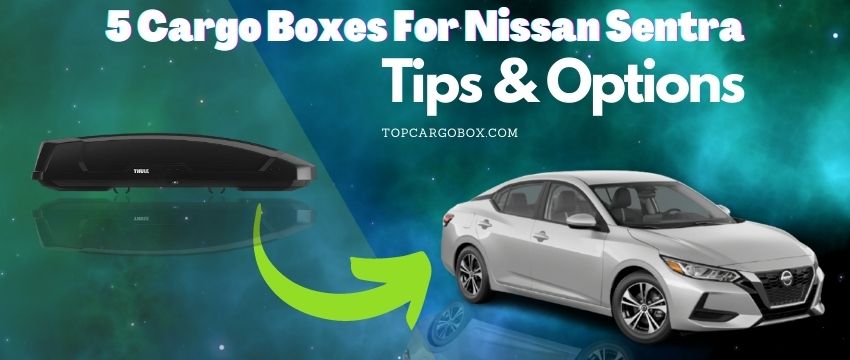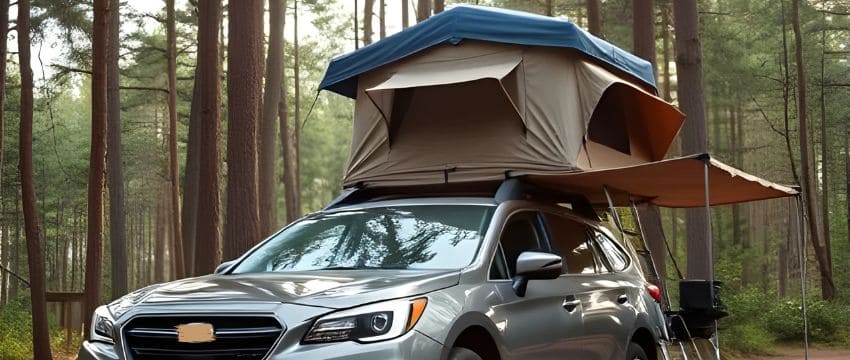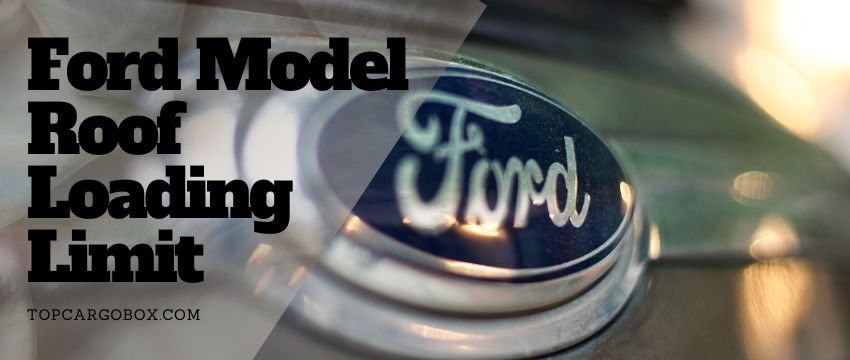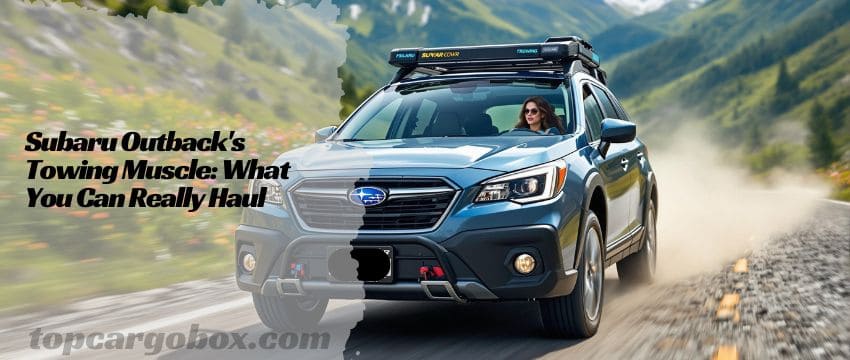What’s up, RAV4 adventurer? Ever stared at that mountain of camping gear, sports equipment, or luggage destined for your trunk and thought, “No way this all fits”? You’re totally not alone. That awesome RAV4 cargo space can vanish faster than free donuts at the office, especially on big trips or with a crew. That’s where rooftop storage swoops in like a superhero, seriously expanding your hauling power. But then comes the big decision: Cargo Box or Cargo Basket? It’s a legit question, and honestly, both have their killer features. Let’s dive deep into this battle royale for your roof space!
Understanding Your RAV4 Roof Setup
First things first, how’s it going with your roof rails? Most RAV4s come with those sleek factory side rails running front-to-back. Think of these as your foundation, dude. But hold up, you can’t just slap a box or basket directly onto those side rails! You need crossbars, the essential bridge connecting your storage solution to your ride. No crossbars? Forget it; you’re stuck. Getting the right crossbars is step zero, non-negotiable. Choosing strong, compatible crossbars rated for the weight you plan to carry is absolutely critical for safety and performance. If you’re unsure where to start, check out our guide on the best roof racks for your Toyota RAV4 – it’ll save you headaches later.

The Roof Rack Basket: Open-Air Freedom
Alright, picture this: a rugged metal cage chilling up top. That’s your classic roof basket, bro. It’s all about open-air, versatile hauling. Imagine strapping down oversized, bulky, or oddly shaped items that would laugh at the confines of a trunk or box. Think kayaks, lumber, oversized coolers, even firewood – the basket doesn’t care. What’s the vibe? Utilitarian, tough, and ready for anything messy or huge. Installation is usually pretty straightforward – bolt it onto your crossbars and you’re often good to go. Need inspiration? We’ve got the lowdown on some top contenders like the Suoorto Rooftop Cargo Basket or the Yzona Hard Top and Meefar Upgrade options.
Pros of Rocking a Roof Basket
Why might you be feeling the basket life? Let me count the ways! First off, capacity for awkward stuff is unreal. That massive tent bag? Toss it in. The kids’ bikes before you invest in dedicated bike racks for your RAV4? Strap ’em down. Cost is often a big win too. Generally, baskets come in cheaper than hard-shell boxes, making them a sweet entry point. Accessibility? Totally easy-peasy. You see everything, reach anything, and loading/unloading is super quick. Durability is usually top-notch – they’re built tough to handle the elements and whatever you throw at them. Plus, they look rugged and adventurous parked up there, right?
Cons of the Basket Game
But it ain’t all sunshine and rainbows, my friend. The biggest bummer? Zero weather protection. Rain, snow, road grime, bird bombs – whatever’s falling from the sky or kicked up from the road is landing right on your gear. You will need serious waterproof bags or tarps and killer tie-downs. Security? Meh, not so much. Anything you put up there is visible and technically accessible to anyone walking by. Aerodynamics? What aerodynamics? Baskets are basically wind catchers, creating noticeable drag and wind noise, especially at highway speeds. This directly hits your fuel efficiency – expect a bigger MPG dip than with a sleek box. Driving dynamics change too; you’ll feel the extra weight and wind push more.
The Roof Cargo Box: Sealed & Streamlined
Now, flip the script: imagine a sleek, hard-shell pod locked onto your roof. That’s the cargo box, your secure, weatherproof fortress in the sky. It’s like adding a giant, lockable trunk up top. Everything inside stays clean, dry, and hidden from prying eyes. Loading is super simple – pop the clamshell lid, pack it efficiently, click it shut, and lock it. Peace of mind delivered! The shape is designed to slice through the wind, meaning less noise and better gas mileage compared to a basket (though still a hit compared to nothing). Curious about specific models? We compare popular ones like the Yakima CBX, Visrack Black, or the Thule Pulse and Sportrack Vista XL.
Pros of Choosing a Cargo Box
So, why go for the box? Protection is king, hands down. Rainstorm on the highway to the campsite? Your sleeping bags are bone dry inside. Blizzard? No problem. Dusty dirt roads? Gear stays clean. Security is a massive plus too. Locking that lid means your stuff is safe from casual grab-and-go thieves at rest stops or trailheads. Aerodynamic efficiency is way better than a basket, meaning less whistling wind driving you nuts and a smaller hit to your precious miles per gallon. Driving feels more stable as the weight is contained and the shape cuts wind resistance. They’re surprisingly spacious inside, letting you pack a ton of soft goods efficiently. Wondering about longevity? Good boxes last years.
Cons of the Cargo Box Life
Okay, fair enough, boxes aren’t perfect either. The upfront cost can make you gulp, dude. Quality boxes are a significant investment compared to most baskets. Access is less instant. You gotta unlock it, lift the lid (which can be heavy and require some height), and often dig around inside – no quick grabbing of that jacket. Size constraints are real. While spacious, the fixed shape means super long, super wide, or super tall items might be a no-go. Forget strapping a kayak on top of the box! Storage when not in use is a legit headache. These things are bulky! You’ll need serious garage space, a storage pulley system, or a shed. Check out tips for storing rooftop cargo boxes in your garage if this worries you. Installation and removal are also more involved than a basket, though you get quicker with practice.
Making the Right Call for Your RAV4 Life
Feeling overwhelmed? Totally get it. Choosing isn’t always black and white. Honestly, your lifestyle is the ultimate decider. Are you the weekend warrior hitting muddy trails, hauling dirty bikes and bulky gear? The basket’s open flexibility might be your jam. Are you the road-tripping family needing clean, dry clothes and toys for a week, or the skier needing protected gear on snowy highways? The box’s security and weatherproofing win hands down. Think hard about what you haul most often and what drives you nuts. Is it wet gear or struggling with bulky items? Noise and gas mileage or security concerns? Budget plays a big role too, obviously. Be realistic about what you can spend upfront.
Installation & Daily Driving Realities
No big deal? Well, kinda. Whichever you choose, getting it mounted right is crucial. Follow the instructions meticulously – torque specs matter for safety! Driving dynamics will change. You’ll feel the extra weight and height, especially in corners or wind. Be extra mindful of clearance – drive-thrus, garages, low branches. That extra foot or two up top bites hard! MPG will take a hit, period. How much depends on the item, your speed, and your driving style (more on that below!). Wind noise is inevitable, though boxes are generally quieter than baskets. Get used to checking your load before you drive off and periodically on long trips.
Key Specs at a Glance
Off the top of my head, here are the main things you’ll compare:
Feature | Roof Cargo Box | Roof Cargo Basket |
|---|---|---|
Primary Use | Weatherproof, secure storage | Hauling bulky/odd-shaped items |
Protection | Full (weather, dust, security) | None (requires separate covers) |
Security | Lockable lid | Open access (items exposed) |
Aerodynamics | Streamlined (better efficiency) | Drag-heavy (more wind resistance) |
Cost | Generally Higher | Generally Lower |
Access | Requires opening lid | Instant (top/side loading) |
Item Size Limitation | Fixed interior dimensions | Flexible (straps oversized items) |
Off-Season Storage | Bulky, requires significant space | Easier to store (often smaller footprint) |
Noise Level | Lower wind noise | Higher wind noise |
The Verdict: Box or Basket?
So, which one wins the battle for your RAV4 roof? It’s not about which is objectively “better,” bro. It’s about which is better for YOU right now. If keeping gear pristine and secure is your top priority, and you mostly haul standard luggage or soft bags, the cargo box is probably your soulmate. If you regularly tackle oversized, dirty, or wet gear and prioritize budget and easy loading, the basket’s rugged charm will win you over. Seriously, both are awesome solutions to the same problem – lack of space! Sometimes, the answer might even be both, depending on the trip, but that’s a whole other level! For a deeper dive into the fundamental differences between cargo boxes and baskets, we’ve got you covered. And if you’re eyeing a used RAV4 for your adventures, check out RAV4 model years under $15k.
Ultimately, adding rooftop storage unlocks a whole new level of adventure for your RAV4. It transforms “maybe we can fit it” into “heck yeah, load it up!” Whether you choose the sleek, sealed protection of the box or the open, anything-goes vibe of the basket, you’re gaining freedom. Weigh your needs, check your budget, measure your garage, and get ready to explore further. What are you waiting for? Get out there!
Your RAV4 Roof Storage Questions Answered
1. What is the difference between a roof rack basket and a platform?
Dude, good question, it can be confusing! A roof rack basket is basically that open cage design we talked about – sides and maybe a front/rear lip, but the bottom is typically a grid. You strap everything down onto that grid. A platform, on the other hand, usually has a solid or expanded metal floor panel. Think of it like a flatbed truck vs. a wire rack. Platforms offer a smoother surface, can be better for certain gear like plastic bins, and sometimes have integrated tie-down tracks. Baskets excel at containing awkward shapes with their higher sides, while platforms offer a flatter, more stable base. Both attach to your crossbars, but the loading surface is the key difference. Check out more details on various cargo baskets to see the styles.
2. What is the benefit of a roof basket?
The main benefit? Total flexibility for bulky, dirty, or oversized gear, hands down. Need to haul that massive, muddy dog crate? Toss it in the basket. Bringing home a new ladder or a bunch of long PVC pipes? Strap ’em down easy. It’s also generally the most affordable way to add significant roof storage. Installation is usually quick and simple compared to a box. Access is instant – just reach up and grab or strap something down without fumbling with locks or lids. Plus, they look pretty rugged and adventurous mounted up top! For DIY camping setups, baskets are often the starting point – see some RAV4 camping hacks that leverage them.
3. Is a roof rack better than a cargo carrier?
Whoa, let’s clarify terms first! “Roof rack” usually refers to the system – your side rails and crossbars – the foundation. A “cargo carrier” is the thing you put on the roof rack – that’s your box, basket, platform, or even a bag. So, you need a roof rack (specifically, crossbars) to use any cargo carrier. They aren’t rivals; they work together! The rack is the stage, the carrier is the performer. Saying “roof rack vs. cargo carrier” is like asking “is a table better than a plate?” You kinda need both for dinner! Our guide on cargo carriers for the RAV4 explains this setup.
4. What is the purpose of a roof cargo box?
Its core purpose is simple: provide secure, weatherproof storage space up top. Think of it like adding a giant, lockable, hard-shell suitcase to your roof. It keeps your gear completely dry in rain or snow, protected from dust and road grime on long trips, and safe from casual theft because it locks shut. It lets you pack bulky but relatively standard-shaped items (luggage, duffels, camping gear bins) that just won’t fit inside the RAV4, even with the seats down. It’s the go-to for families, road trippers, and anyone needing clean, protected gear without stuffing the interior. See the best roof cargo boxes in 2025 for top options.
5. How fast can you drive with a roof cargo box?
Most manufacturers have a maximum speed rating, usually around 80 mph (130 km/h) or sometimes 100 mph (160 km/h) for premium boxes. Cruising at 65-75 mph on the highway is generally fine and safe if it’s installed correctly. However, always, always check the specific manual for your box model! Driving significantly slower is always safer, reduces stress on the mounts and your car, and improves fuel efficiency. Exceeding the speed limit, especially in strong crosswinds, is risky and puts huge strain on the box, the rack, and your car’s stability. Seriously, chill on the speed when you’ve got the box up top. Stability is more important than shaving off a few minutes.
6. How much does a roof box affect MPG?
Get ready for it: you will lose some miles per gallon, no way around it. How much sucks, but varies wildly: expect anywhere from a 10% to 25% decrease, or roughly 2 to 8 MPG less. The biggest factors? Your driving speed (faster = much worse MPG) and the box’s size/shape (bigger, boxier = more drag). A sleek, low-profile box will hurt less than a giant square one. Driving habits matter too – aggressive acceleration and high speeds grunt down that fuel gauge. Even an empty box creates drag, so it’s always a trade-off between space and efficiency. Compare the Subaru Outback vs. Toyota RAV4 – both popular choices needing roof storage!
Our team is creating outdoor-gear relevant articles with passion. If our articles can help you to find the correct solutions for your questions, we will be happy about that. In the content creation process, we usually collect accurate and useful information online or offline to compile our content in an organized way. Consequently, we can guarantee that you can discover some expected answers to your questions. We appreciate your time on our site.










